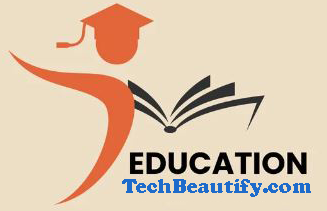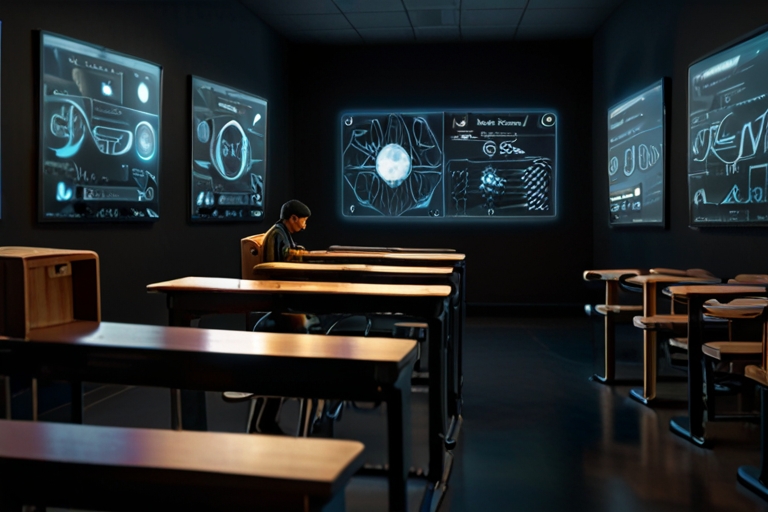Outline
- Introduction
- The Evolution of Education
- The Shift from Traditional to Digital
- The Historical Perspective
- Chalkboards: The Classic Classroom Tool
- Overhead Projectors: A Step Towards Technology
- Early Computers in Education
- The Digital Transformation
- Introduction of Tablets and Laptops
- Interactive Whiteboards
- E-Learning Platforms
- Advantages of Digital Education
- Accessibility and Convenience
- Personalized Learning Experiences
- Engaging and Interactive Content
- Challenges in Digital Education
- Digital Divide: Access to Technology
- Screen Time and Health Concerns
- Teacher Training and Adaptation
- Innovative Educational Technologies
- Virtual Reality in Classrooms
- Augmented Reality for Enhanced Learning
- Artificial Intelligence in Education
- Future Trends in Education
- Gamification of Learning
- Blockchain for Credential Verification
- The Role of Big Data in Education
- The Role of Teachers in a Digital World
- Facilitators of Learning
- Lifelong Learners
- The Need for Continuous Professional Development
- Case Studies of Successful Digital Integration
- Example 1: A School’s Journey to Digital Transformation
- Example 2: Online Universities and Their Impact
- Conclusion
- The Future is Digital
- Embracing Change for a Better Educational Experience
- FAQs
- What are the main benefits of digital education?
- How can schools address the digital divide?
- What is the role of teachers in digital education?
- Are there any drawbacks to using technology in education?
- What are the future trends to watch in digital education?
From Chalkboards to Tablets: The Future of Education in a Digital World
Introduction
Education has always been the cornerstone of societal progress, evolving alongside advancements in technology. From chalkboards to tablets, the journey of education reflects the broader transition from traditional to digital mediums. As we delve into the future of education in a digital world, it’s essential to understand the significant shifts that have occurred and those on the horizon.
The Historical Perspective
Chalkboards: The Classic Classroom Tool
Chalkboards have long been synonymous with classrooms. These simple yet effective tools allowed teachers to visually communicate lessons to a large group of students. For centuries, the chalkboard was the focal point of educational settings, representing a reliable method for instruction.
Overhead Projectors: A Step Towards Technology
The introduction of overhead projectors marked a significant step towards incorporating technology in education. Teachers could display transparent sheets with pre-written notes, diagrams, and illustrations, making lessons more dynamic and engaging.
Early Computers in Education
The arrival of computers in the classroom during the late 20th century began to revolutionize education. Early computers provided access to digital encyclopedias and basic educational software, setting the stage for more advanced technological integration.
The Digital Transformation
Introduction of Tablets and Laptops
Tablets and laptops have become ubiquitous in modern classrooms, providing students with instant access to a wealth of information and learning resources. These devices support various educational apps and software, enhancing the learning experience by making it interactive and personalized.
Interactive Whiteboards
Interactive whiteboards have replaced traditional chalkboards and overhead projectors in many schools. These digital boards allow teachers to display multimedia content, write notes, and interact with educational software, creating a more engaging learning environment.
E-Learning Platforms
E-learning platforms like Khan Academy, Coursera, and EdX have democratized education, making high-quality learning accessible to anyone with an internet connection. These platforms offer a wide range of courses, from elementary school subjects to advanced university-level topics.
Advantages of Digital Education
Accessibility and Convenience
Digital education breaks down geographical barriers, allowing students to access learning materials from anywhere in the world. This convenience makes it easier for students to fit education into their busy lives, especially for those balancing work, family, and studies.
Personalized Learning Experiences
Technology enables personalized learning experiences, where students can learn at their own pace and style. Adaptive learning software analyzes students’ progress and adjusts the content accordingly, ensuring a tailored educational journey.
Engaging and Interactive Content
Digital tools can make learning more engaging and interactive. Educational videos, interactive simulations, and gamified learning platforms capture students’ attention and make complex concepts easier to understand.
Challenges in Digital Education
Digital Divide: Access to Technology
One of the significant challenges in digital education is the digital divide. Not all students have access to the necessary technology or internet connectivity, creating disparities in educational opportunities.
Screen Time and Health Concerns
Increased screen time can lead to health issues such as eye strain, poor posture, and reduced physical activity. Balancing digital learning with offline activities is crucial for maintaining students’ well-being.
Teacher Training and Adaptation
Teachers must adapt to new technologies and integrate them effectively into their teaching methods. Continuous professional development and training are essential to ensure educators are equipped to leverage digital tools.
Innovative Educational Technologies
Virtual Reality in Classrooms
Virtual Reality (VR) offers immersive learning experiences, allowing students to explore historical sites, conduct virtual science experiments, and interact with complex simulations. VR can make learning more memorable and engaging.
Augmented Reality for Enhanced Learning
Augmented Reality (AR) overlays digital information onto the real world, providing interactive and engaging educational experiences. AR can enhance subjects like biology, where students can visualize the human body’s anatomy in 3D.
Artificial Intelligence in Education
Artificial Intelligence (AI) can analyze student data to provide personalized learning recommendations, automate administrative tasks, and offer real-time feedback. AI-powered tutors can assist students in mastering difficult concepts.
Future Trends in Education
Gamification of Learning
Gamification involves incorporating game elements into learning to make it more engaging and fun. Points, badges, and leaderboards can motivate students and enhance their learning experience.
Blockchain for Credential Verification
Blockchain technology can provide secure and tamper-proof verification of academic credentials. This ensures the authenticity of degrees and certificates, simplifying the verification process for employers and educational institutions.
The Role of Big Data in Education
Big Data analytics can provide insights into student performance, helping educators identify areas for improvement. Data-driven decision-making can enhance teaching methods and learning outcomes.
The Role of Teachers in a Digital World
Facilitators of Learning
In a digital world, teachers become facilitators of learning rather than mere transmitters of knowledge. They guide students in navigating digital resources and developing critical thinking skills.
Lifelong Learners
Teachers must embrace lifelong learning to stay updated with technological advancements and educational trends. Continuous professional development is essential for effective teaching in a digital age.
The Need for Continuous Professional Development
Ongoing training and professional development programs help teachers integrate digital tools effectively and stay ahead of educational innovations.
Case Studies of Successful Digital Integration
Example 1: A School’s Journey to Digital Transformation
One example of successful digital integration is a school that transitioned from traditional teaching methods to a fully digital curriculum. By implementing tablets, interactive whiteboards, and e-learning platforms, the school enhanced student engagement and learning outcomes.
Example 2: Online Universities and Their Impact
Online universities like the University of Phoenix and Southern New Hampshire University have demonstrated the potential of digital education. They offer flexible learning options, making higher education accessible to non-traditional students, including working professionals and parents.
Conclusion
The future of education is undeniably digital. Embracing technology in the classroom offers numerous benefits, from personalized learning experiences to increased accessibility. However, addressing challenges such as the digital divide and ensuring continuous teacher training is crucial. By adapting to these changes, we can create a better educational experience for future generations.
FAQs
What are the main benefits of digital education?
Digital education offers accessibility, personalized learning experiences, and engaging content. It allows students to learn at their own pace and provides a wealth of resources at their fingertips.
How can schools address the digital divide?
Schools can address the digital divide by providing devices and internet access to students in need, seeking funding for technology initiatives, and partnering with organizations to support underserved communities.
What is the role of teachers in digital education?
Teachers act as facilitators, guiding students through digital resources and helping them develop critical thinking skills. Continuous professional development is essential for teachers to stay updated with technological advancements.
Are there any drawbacks to using technology in education?
Drawbacks include the digital divide, increased screen time leading to health concerns, and the need for significant teacher training. Balancing technology use with offline activities is essential.
What are the future trends to watch in digital education?
Future trends include gamification, blockchain for credential verification, and the use of Big Data to enhance learning outcomes. Innovations like VR, AR, and AI will continue to transform education.

